#Interstate 91
Photo

“Best Fall Roadtrips” by | Rohit Gomashe
Inerstate 91 - Derby Line, Vermont
2K notes
·
View notes
Text

Day 974
Never to part since the day we met
Out on Interstate 91
I was bent metal you were a flaming wreck
When we kissed at the overpass
42 notes
·
View notes
Text
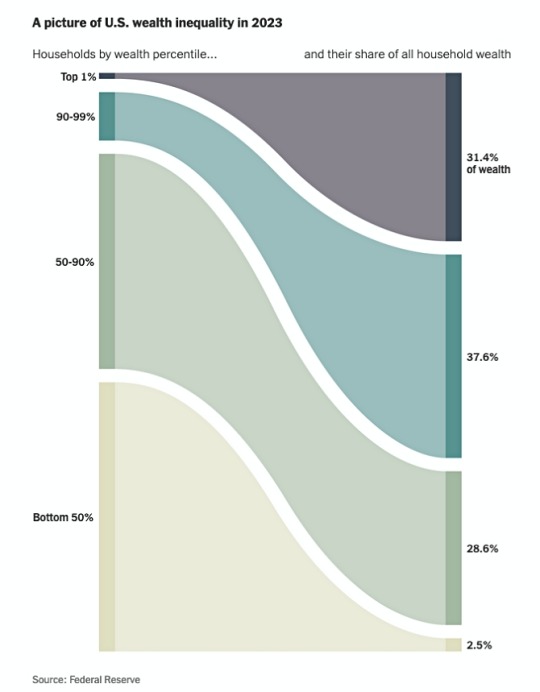
^^^ This is why people think things are getting worse. 1% of the US population owns 31.4% of the nation's wealth.
This is the result of massive tax breaks for the filthy rich which began under Republican Ronald Reagan in the early 1980s, were boosted twice by Republican George W. Bush in the 2000s, and got a big boost under Republican billionaire Donald Trump.
David Leonhardt at the New York Times writes...
The simplest explanation for the shift is that the old economic approach hasn’t worked very well for most Americans. Starting in the 1980s, the U.S. moved toward an economic policy that’s variously described as laissez-faire, neoliberal or market-friendly. It involved much lower taxes for the wealthy, less regulation of business, an expansion of global trade, a crackdown on labor unions and an acceptance of very large corporations.
The people selling this policy — like Milton Friedman, a Nobel laureate in economics — promised that it would bring prosperity for all. It has not.
Incomes for the bottom 90 percent of workers, as ranked by their earnings, have trailed economic growth, and wealth inequality has soared. For years, Americans have told pollsters that they were unhappy with the country’s direction. Perhaps most starkly, the U.S. now has the lowest life expectancy of any affluent country; in 1980, American life expectancy was typical.
Conventional wisdom rarely changes quickly. Friedman and his fellow laissez-faire intellectuals spent decades on the fringes, before the 1970s oil crisis and other economic problems caused many Americans to embrace their approach. But conventional wisdom can change eventually. And after decades of unmet promises about the benefits of a neoliberal economy, more people have grown skeptical of it recently.
Massive tax breaks for the filthy rich as a means of boosting economic growth for all was once regarded as fringe economics – until Ronald Reagan took office. Even the man who became Reagan's vice president referred to such a policy in the 1980 primaries as "voodoo economics" – but to no avail. It has largely overshadowed economic policy for the past 40+ years.
There were only two exceptions. In 1993 when Democrat Bill Clinton raised taxes on the filthy rich. The economy soared and the 1990s became the most prosperous decade since the 1950s. And in 2013 Democrat Barack Obama let the Bush tax breaks expire. Sadly, Trump and the then GOP majorities on Capitol brought back the Bush tax breaks in 2017 and have been ironically blaming poor people for the subsequent rise in the national debt.
As president, Trump often contradicted his own populist rhetoric. (His one big piece of legislation was a tax cut that mostly benefited the rich.)
There needs to be a repeal of the Reagan-Bush-Trump tax giveaways to billionaires like Elon Musk.
One stat which Republicans don't like hearing is that in the mid 1950s, the highest federal income tax rate was 91%.
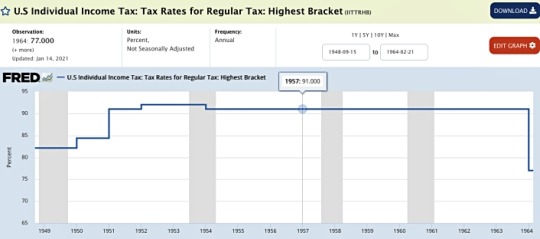
Republicans are nostalgic about some stuff about the 1950s like Jim Crow laws and suppression of women and gays. But they don't talk about the federal tax rate on the filthy rich which helped build the Interstate Highway System and provided low cost college education to the masses.
We don't need to go back to a rate of 91% for the Musks, Trumps, and Zuckerbergs. But just under half that rate would dramatically restore economic balance in this country. And the ONLY way to get there is to keep promoting growing Democratic majorities in Congress and electing Democratic presidents. Votes for third party losers are about as helpful as used toilet paper.
#usa#wealth inequality#income inequality#republican tax breaks for the filthy rich#voodoo economics#ronald reagan#george w. bush#donald trump#billionaires are the main beneficiaries of republican rule#prosperity = higher taxes on the rich#vote blue no matter who#election 2024
13 notes
·
View notes
Text
The Disappearance of Maura Murray

Maura Murray was a 21-year-old nursing student, completing her junior year at the University of Massachusetts Amherst at the time of her disappearance. On Monday, February 9, after midnight, Murray used her computer to search MapQuest for directions to the Berkshires and Burlington, Vermont. That same day, the first reported contact that Murray had with anyone was with her boyfriend, at 1:00pm. She emailed him: "I love you more stud. I got your messages, but honestly, I didn't feel like talking too much of anyone, I promise to call today though. love you, Maura." She also made a phone call inquiring about renting a condominium at the same Bartlett, New Hampshire, condo association that her family had vacationed with in the past. Telephone records indicate that the call lasted about three minutes. The owner did not rent the condo to Murray. Murray called a fellow nursing student for reasons unknown, at 1:13pm.
On February 9, at 1:24pm, Murray emailed a work supervisor of the nursing school faculty stating that she would be out of town for a week due to a death in her family. However, according to her family, they did not have a death in the family at that time. At 2:05 pm, Murray called a number which provides recorded information about booking hotels in Stowe, Vermont and the call lasted about five minutes. At 2:18 pm, she telephoned her boyfriend and left a voice message promising him they would talk later. This call ended after only one minute.
In her car, Murray had packed clothing, toiletries, and college textbooks. When her room was later searched, campus police discovered that most of her belongings had been packed in boxes and the art had been removed from the walls. It's not clear whether Murray packed them that day, but police at the time said she had packed between Sunday night and Monday morning.
On top of the boxes was a printed email to Murray's boyfriend indicating that their was trouble in their relationship. Around 3:30 pm, she drove off the campus in her black 1996 Saturn sedan. Classes at the university had been canceled that day due to a snowstorm.
At 3:40pm, Murray withdrew $280 from an ATM and closed-circuit footage showed that she was alone. Murray then purchased about $40 of alcoholic beverages from a nearby liquor store. At some point in the day, she also picked up accident-report forms from the Massachusetts Registry of Motor Vehicles.
Murray left Amherst between 4 and 5pm, presumably along interstate 91 north. She called to check her voicemail at 4:37 pm, the last recorded use of her cell phone. To date there has been no indication that she informed anyone of her destination, or any evidence that she had even chosen one.
After 7:00pm, a Woodsville, New Hampshire resident heard a loud thump outside her house. Through her window, she saw a car up against the snowbank along Route 112, also known as Wild Ammonoosuc Road. The car pointed west on the eastbound side of the road. The woman reported the car accident to the Grafton County Sherriff's Department at 7:27pm. According to the 911 call log, the woman had claimed to see a man smoking a cigarette inside the car but she later set the record straight and said that she had not seen a man smoking a cigarette but rather what appeared to be a red light glowing from inside the car, potentially from a cell phone.
A passing motorist, a school bus driver who lived nearby, stopped at the scene. They claimed to have seen the car, as well as a young woman walking around the vehicle. The motorist noticed that the woman was not bleeding or visibly injured, but appeared to be cold ad shivering. he had offered to call for help but she asked him not to call the police, assuring him that she had already called AAA, but AAA has no record of any such call. The motorist continued home and called the police, knowing that there was no cellular reception in the area. His call was received by the Sheriff's Department at 7:43 pm. He was not able to see Murray's car when he made the call but he did notice several cars pass the road before police arrived to the scene. Another local resident driving home from work claimed to have passed the scene around 7:37pm, and saw a police SUV parked face to face with Murray's car. She pulled over briefly but did not see anyone inside or outside of the car, then deciding to continue home. However, this witness's statement contradicts the official police log, which has Haverhill police arriving nine minutes later. When the police arrived at the scene, at 7:46pm, the woman driver had disappeared. Both inside and outside the car, an officer discovered what appeared to be red wine stains. Inside the car there was an empty beer bottle, a damaged box of Franzia wine, AAA card issued to Murray, blank accident report forms, compact discs, gloves, makeup, diamond jewelry, Murray's favorite stuffed animal, driving directions to Burlington, Vermont, and Not Without Peril, a book about climbing in the White Mountains. Missing items included Murray's credit and debit cards, and cell phone, none of which have been found since her disappearance. Police were able to trace the vehicle to Murray, and initially treated her as a missing person, with the belief that she may have voluntarily disappeared. This speculation was based on her apparent travel preparations and no obvious evidence of foul play. In 2009, Murray's case was given to the New Hampshire cold case division, and authorities are handling it as a "suspicious" missing persons case.
Sometime between 8:00 and 8:30pm, a contractor returning home from Franconia, saw a young woman, on foot, moving quickly eastbound on Route 112 about 4 to 5 miles east of where Murray's vehicle was discovered. He also noticed that the woman was wearing jeans, a dark coat, and a light-colored hood. He did not report this to police immediately due to his own confusion regarding the dates, barely discovering three months later that he had spotted this person on the same night that Murray had disappeared.
The responding officer and the bus driver drove around the area searching for Murray. Just before 8:00 pm, EMS and a fire truck arrived to clear the scene. By 8:49 pm, the car had been towed to a local garage, and at about 9:30 pm, the responding officer left. A rag believed to have been part of Murray's emergency roadside kit was discovered stuffed into the Saturn's muffler pipe. Authorities would refer to Murray as simply "missing" at 12 pm the next day, almost 24 hours after the last confirmed sighting of her.
At 12:36 pm the following day, February 10, a "Be on the Lookout" report for Murray was issued. She was reported as wearing a dark coat, jeans, and a black backpack. A voicemail was left on Fred Murray's home answering machine at 3:20 pm stating that her car had been found abandoned. He was working out of state and did not receive this call. At 5:00 pm, Murray's older sister contacted her father to make him aware of the situation. He then contacted the Haverhill Police Department and was told that, if Murray was not reported safe by the following morning, the New Hampshire Fish and Game Department would start a search. At 5:17 pm, Murray was first referred to as "missing" by the Haverhill police.
On February 11, Murray's father arrived before dawn in Haverhill. At 8:00 am, New Hampshire Fish and Game, the Murrays, and others began to search. A police dog tracked the scent from one of Murray's gloves 100 yards east from where the vehicle had been discovered, but lost the scent. This suggested to police she'd left the area in another car. At 5:00 pm, Murray's boyfriend and his parents arrived in Haverhill. He was interrogated in private, and then was joined by his parents for questioning. At 7:00 pm, the police said they believed Murray came to the area either to run away or attempt suicide but her family believed that this was unlikely.
Murray's boyfriend had turned off his cell phone during his flight to Haverhill. At some point, he had received a voicemail that he believed to be the sound of Murray sobbing. The call was traced to a calling card issued to the American Red Cross.
On February 12, Murray's father and her boyfriend held an evening press conference in Bethlehem, New Hampshire, and the next day the first press coverage was published. At 3:05 pm, the police reported Murray might be headed to the Kancamagus Highway area, and she was "listed as endangered and possibly suicidal". The police report also stated Murray was intoxicated at the crash site, although the bus driver had said she did not appear impaired. The Haverhill police chief said that, "Our concern is that she's upset or suicidal."
A week after Murray's disappearance, her father and boyfriend were interviewed by CNN's American Morning. Murray's family expanded their search into Vermont, dismayed that authorities there hadn't been informed of her disappearance.
Although missing person cases are normally handled by local and state police, the FBI joined the investigation ten days after she disappeared. The FBI interviewed family from Massachusetts and the Haverhill police chief announced that the search was now nationwide. Ten days after her disappearance, New Hampshire Fish and Game conducted a second ground and air search, using a helicopter with a thermal imaging camera, cadaver dogs, and tracking dogs. Murray's older sister discovered a ripped white pair of women's underwear lying in the snow on a secluded trail near French Pond Road on February 26, but DNA tests found that the underwear didn't belong to Murray.
The police returned the items found in Murray's car to her family, at the end of February. On March 2, the family checked out of their motel, exhausted from the search. Fred Murray returned nearly every weekend to continue searching. In April, Haverhill Police informed him of complaints of trespassing on private property.
The March 2004 disappearance of Brianna Maitland in Montgomery, Vermont, 66 miles away from Murray's last sighting in Woodsville, drew comparisons from media and law enforcement due to the similarities in disappearances. However, state police have stated there are no links between the two cases.
In April and again in June, New Hampshire and Vermont police dismissed any connection between Murray's case and Maitland's. In a press release, they stated they believed that "Maura was headed for an unknown destination and may have accepted a ride in order to continue to that location," adding that they had discovered no evidence that a crime had been committed. They dismissed the possibility that a serial killer was involved.
On July 1, the police retrieved the items found in Murray's vehicle from her family for forensic analysis. On July 13, a one-mile radius search was performed by nearly 100 searchers, including state troopers, rescue personnel, and volunteers. This was the fourth search around the crash area and the first search performed without snow on the ground. Authorities were most interested in locating the black backpack Murray had in her possession but not found in her car. Police stated the search discovered "nothing conclusive".
In late 2004, a man allegedly gave Murray's father a rusty, stained knife that belonged to the man's brother, who had a criminal past and lived less than a mile from where the car was discovered. His brother and his brother's girlfriend were said to have acted strangely after the disappearance, and the man's brother claimed he believed the knife had been used to kill Murray. Several days after the knife was given to Murray's father, the man's brother allegedly scrapped his Volvo. Family members of the man who turned in the knife claimed he had made up the story in order to obtain reward money in the investigation, and that he had a history of drug use.
In 2005, Fred Murray petitioned New Hampshire Governor, Craig Benson for assistance in the search and appeared on The Montel Williams Show in November of 2004 to publicize the case. On February 9, 2005, the first anniversary of Murray's disappearance, a service was held where the car was found, and her father met briefly with New Hampshire Governor, John Lynch.
In late 2005, Fred Murray filed suit against several law enforcement agencies, with the aim of seeing files on the case. On November 1, 2005, a user named "Tom Davies" logged into a message board called "Not Without Peril", which was dedicated to discussion of Murray's disappearance, and claimed to have seen a black backpack behind a restroom at Pemigewasset Overlook, around 30 miles east of Woodsville on Route 112. Murray had owned a black backpack. Senior Assistant Attorney General Jeffery Strelzin stated that law enforcement "was aware of the backpack," but did not disclose whether it had been taken for forensic testing.
The New Hampshire League of Investigators, ten retired police officers and detectives, and the Molly Bish Foundation started working on the case in 2006. Tom Shamshak, a former police chief and a member of the Licensed Private Detectives Association of Massachusetts, said, "It appears...that this is something beyond a mere missing persons case. Something ominous could have happened here." The Arkansas group Let's Bring Them Home offered a $75,000 reward in 2007 for information that could solve her disappearance.
In October 2006, volunteers led a two-day search within a few miles of where Murray's car was found. In the closet of an A-frame house approximately 1 mile from the crash site, cadaver dogs allegedly went "bonkers", possibly identifying the presence of human remains. The house had formerly been the residence of the man implicated by his brother, who had given Fred Murray the rusty knife in 2004. A sample of carpet from the home was sent to the New Hampshire State Police, but the results were never released to the public. In July 2008, volunteers led another two-day search through wooded areas in Haverhill. The group consisted of dog teams and licensed private investigators.
Murray's case was one of many cited by proponents of a statewide cold case unit for New Hampshire in 2009. Her case was subsequently added to the newly established cold case unit later that year. In 2010, Fred Murray publicly criticized the police investigation for treating the disappearance as a missing persons case and not a criminal matter, and called on the FBI to join the investigation. Jeffery Strelzin said in February 2009 that the investigation was still active: "We don't know if Maura is a victim, but the state is treating it as a potential homicide. It may be a missing-persons case, but it's being handled as a criminal investigation."
In 2014, on the tenth anniversary of Murray's disappearance, Strelzin stated that "We haven't had any credible sightings of Maura since the night she disappeared." In an article published in the New York Daily News on the tenth anniversary of his daughter's disappearance, it was reported that Fred Murray believed she was dead and had been abducted the night of her disappearance.
On February 9, 2017, the thirteenth anniversary of Murray's disappearance, Strelzin wrote in an email to The Boston Globe: "It's still an open case with periods of activity and at times it goes dormant. There are no new updates to share at this time."
In February 2019, the fifteenth anniversary of Murray's disappearance, Fred Murray reiterated his belief that his daughter was dead, as well as his suspicions about the nearby house that cadaver dogs responded to, stating, "That's my daughter, I do believe." In early April, excavation was done within the basement of the house. Fred Murray had previously wanted to search the home, but the owners did not cooperate. Following sale of the property, its new owners allowed several searches of the property since February. The excavation conducted in early April found "absolutely nothing, other than what appears to be a piece of pottery or old piping."
In early 2021, the tree at the site where Murray was last seen—which had been marked with a blue ribbon as a memorial—was cut down by the property owner. Shortly thereafter, a request from Murray's family to have a New Hampshire historical marker placed at the site, which had been submitted in late 2020, was turned down by the New Hampshire Division of Historical Resources.
On September 14, 2021, New Hampshire State Police announced that bone fragments had been found on Loon, Mountain in Lincoln, New Hampshire, approximately 25 miles east of the site of Murray's crash. Murray had been to the mountain before and had knowledge of the area, according to her sister. The bone fragments were described as "pretty small," and it was expected to take at least two months to determine if they were the remains of Murray or not. In November, it was announced that the remains did not belong to Murray.
In January 2022, FBI issued a national alert in Murray's case and created a Violent Criminal Apprehension Profile, allowing multiple law enforcement agencies to share information regarding her case. In July 2022, law enforcement in New Hampshire initiated a search in the towns of Landaff and Easton.
It's important to note that before Murray had disappeared, she had showed some rather irregular behavior. In November 2003, three months before her disappearance, Murray admitted to using a stolen credit card to order food from several restaurants, including one in Hadley, Massachusetts. The charge was continued in December, and dismissed after three months' of good behavior.
On the evening of February 5, 2004, while she was on duty at her campus-security job, Murray spoke on the phone with her older sister, Kathleen. They discussed Kathleen's relationship problems with her fiancé. Around 10:30 p.m., while still on her shift, Murray reportedly broke down in tears. When her supervisor arrived at her desk, Murray was "just completely zoned out. No reaction at all. She was unresponsive." The supervisor escorted Murray back to her dorm room around 1:20 am. When asked what was wrong, Murray said two words: "My sister." The contents of this call remained unknown until October 2017, when Kathleen publicly explained the conversation: Kathleen, a recovering alcoholic, had been discharged from a rehabilitation clinic that evening, and on the way home, her fiancé took her to a liquor store, which caused an emotional breakdown.
On Saturday, February 7, Murray's father Fred arrived in Amherst. He told investigators he and Murray went car-shopping that afternoon, and later went to dinner with a friend of his daughter. Murray dropped her father off at his motel room and, borrowed his Toyota Corolla, and returned to campus to attend a dorm party. She arrived at 10:30 pm. At 2:30 am on Sunday, February 8, she left the party. At 3:30 am, en route to her father's motel, she struck a guardrail on Route 9 in Hadley, causing nearly $10,000 worth of damage to her father's car. The responding officer wrote an accident report, but there is no documentation of field sobriety tests being conducted. Murray was driven to her father's motel and stayed in his room the rest of the morning. At 4:49 am, there was a cell phone call placed to her boyfriend from Fred's phone. The participants and content of the phone call are not known.
Later Sunday morning, Fred Murray had learned that the damage done to his vehicle would be covered by his auto insurance. He rented a car, dropped Murray off at the university, and departed for Connecticut. At 11:30 that night, Fred called his daughter to remind her to obtain accident forms from the Registry of Motor Vehicles. They agreed to talk again Monday night to discuss the forms and fill out the insurance claim via phone.
Maura Murray has never been found.
8 notes
·
View notes
Text
With the approach of winter and the likelihood of a prolonged stalemate on the battlefield, senior U.S. officials think it prudent that Ukraine eventually consider talks with Russia. At the same time, overt pressure for negotiations is building among some political elites in the West, as well as segments of the public in the United States and Europe. Given this political environment, will Kyiv contemplate significant concessions to end the loss of life and destruction in Ukraine? The answer will ultimately depend on the long-term resolve of Ukraine and the West to resist Russian aggression. The evidence suggests that while this commitment remains strong in Ukraine, it is eroding among its Western partners.
Ukraine’s successful resistance to Russia’s invasion relies on government leadership, military skill and determination, and robust support from the West. Yet the resolve of Ukrainian society is perhaps the decisive factor. Over a week after the start of the Russian invasion, Russian President Vladimir Putin repeated the central point of a lengthy article published under his name the previous summer, that Russians and Ukrainians are one people. In that article, Putin also castigates former Soviet leader Vladimir Lenin for creating a Ukrainian socialist republic in the new Soviet state that stimulated Ukrainian nationalism and eventual demands for independence. But Putin himself has profoundly strengthened Ukrainian nationalism. According to Ukrainian and Russian scholars, the trauma of Putin’s invasion has fundamentally strengthened a unified Ukrainian identity defined around opposition to Russia.
In July 2021, about a year before the invasion, only 55 percent of respondents in a survey said “no” to the question: “Do you agree that Russians and Ukrainians are one people?” Less than two months after the invasion, 91 percent of respondents overall disagreed with Putin’s assertion that Russians and Ukrainians were “one people.” Ninety-seven percent in the European-leaning west of Ukraine felt this way, and 70 percent in the Russophone east. Similarly, while authoritative surveys have long found that most Ukrainians want their country to remain united, in August 2021 only 49 percent of respondents in a survey expressed a very strong attachment to being a citizen of Ukraine. Two months after the invasion, 90 percent of respondents felt this way.
Nationalism has often been a malign force, particularly when manipulated by political actors to mobilize society for aggressive behavior against domestic opponents or external targets, including other states. But the causal arrow may be reversed: War, or the threat of war, strengthens nationalism to unify and protect a group. For political scientist Jeffrey Herbst, external threats generate nationalism as “people realize in a profound manner that they are under threat because of who they are as a nation; they are forced to recognize that it is only as a nation that they can successfully defeat the threat.” This realization can produce dramatic cultural changes that defend against that threat and go far beyond often ephemeral nationalistic effects produced by interstate tension and conflict. Powerful symbolic linkages are created within society, and between society and the state, that temper previous divisions and bind society and the state. War can deeply fracture a divided society, as it did in France in 1940, or it can promote societal cohesion, as it has done in Ukraine.
The Russian invasion has not only decisively strengthened Ukrainian nationalism but also harmonized a Westernized identity throughout the country. Ukraine is now strongly oriented toward Europe, bridging long-standing regional divides. Fifty-two percent of Ukrainians overall—but 63 percent in Ukraine’s west and only 26 percent in the east—wanted to join the European Union immediately after the Euromaidan demonstrations in early 2014. But by September 2022, 86 percent overall expressed this opinion, including 79 percent in the east. Eighty-three percent overall also supported entry into NATO, including a remarkable 69 percent in the east. In a survey just seven years earlier, in 2015, only 15 percent in the east said they would vote to join NATO in a hypothetical referendum. According to a prominent Ukrainian sociologist, the war accomplished what “Ukraine could not do in 30 years of its independent existence.”
Juan Linz and Alfred Stepan have argued that much of eastern Europe was able to navigate the socioeconomic and political turmoil of the post-communist transition in the late 1980s and early 1990s because society believed it was moving toward a market democracy embedded in Western institutions, above all the EU and NATO. Such hope was largely absent in Ukraine at that time but exists now, despite widespread loss of life and socioeconomic devastation. Importantly, polls registered this optimism in the future (which is three times higher than in the immediate prewar period), even during August 2022, a time of exhausting deadlock on the battlefield.
Attitudes toward Russia have sharpened. Representations of Russia are now almost entirely negative, wiping out the significant reserves of soft power enjoyed by Moscow before the war among segments of Ukrainian society. Today, Russia defines for most Ukrainians what Ukraine is not and what their nation stands against. A survey in April 2022 measured how many Ukrainians perceive the Russian threat as existential: Eighty-nine percent of respondents overall believed that Russian troops have committed genocide against the Ukrainian people. This perspective ranged in strength from 92 percent in the west of the country to 85 percent in the south. Even among Ukrainians who only spoke Russian, the percentage was 80 percent.
Survey data from late October suggest these sentiments bolster Ukrainian resolve to fight. Asked whether Ukraine should support negotiations with Russia and possible concessions to end Russia’s invasion or instead continue armed resistance, 86 percent of respondents overall favored armed resistance. Sixty-nine percent of respondents in Ukraine’s devastated east selected this response, as did 66 percent of Ukraine’s Russian speakers.
But while Ukrainian will to fight remains strong, recent surveys point to growing fissures in public opinion in the United States and elsewhere. There’s still a desire to support Ukraine, but also a growing awareness of the costs—and a sharper partisan division. A Morning Consult poll dated Nov. 14 found that only 42 percent of respondents felt that Washington has a responsibility to protect Ukraine from Russian invaders. Democrats were much more likely (54 percent) to acknowledge such responsibility than Republicans (33 percent). Partisan divisions are also evident on the question of economic pain associated with the war. While 46 percent of Democrats support sanctions against Russia even if they cause inflation, only 35 percent of Republicans felt the same way.
Other polls reveal the increasing disenchantment of Republicans with extending aid to Ukraine: A late October Wall Street Journal survey found that 48 percent of Republicans believe the administration is doing too much to help Ukraine, up from single digits at the start of the war. And while 81 percent of Democrats support additional financial aid for Ukraine, only 35 percent of Republicans were in agreement. Fifty-seven percent of respondents overall were in favor of sending more financial aid.
Despite elements of neo-isolationism in the Republican Party, the absence of a populist-fueled red wave in the midterm elections in November should offer some protection to proponents of aid for Ukraine in Congress, at least in the near term. Even in the run-up to the elections, some prominent Republicans sought to dispel concerns that a Republican victory at the polls would lead to the abandonment of Ukraine.
Yet the new Congress is likely to politicize aid to Ukraine. Republicans may oppose high levels of aid to undermine U.S. President Joe Biden on an issue that enhances his image as an effective leader. And if domestic economic conditions continue to decline due to inflation and other problems, it may be increasingly difficult for Congress to insulate itself from growing popular skepticism on economic and military assistance to Ukraine, particularly among Republican voters.
These obstacles to strong support for Ukraine can be reduced by greater efforts at inclusion on the part of Biden that bring like-minded Republicans from the new Congress into his administration’s deliberations with Ukrainian leaders as well as its decision-making on Ukrainian policy. A streamlined, transparent system for monitoring the disbursement of U.S. funding for Ukraine would also address numerous concerns in Washington over potential corruption and mismanagement in Ukraine.
Ironically, Ukraine’s recent success on the battlefield, including the retaking of Kherson, pose two different threats to longer-term Western support of Ukraine. According to survey data, Americans are less concerned now than in March that Russia could defeat Ukraine and have the conflict expand to other countries, perhaps involving the U.S. directly. This shift has enabled concerns over domestic economic problems to spike. Such attitudes, which still run largely along partisan lines, help explain the dramatic decline in strong support for Ukraine among Republicans.
Fear of escalation also remains high for broad segments of the public and elites in the West. Many are apprehensive that Ukrainian victories will stoke desperate brinkmanship by Russia, with potentially dire consequences for Ukraine and the West, including the risk of nuclear war. In Germany, an October 2022 survey found six in 10 respondents were afraid of World War III, while almost seven in 10 Italians expected a global conflict.
These separate groups—those who worry about a worsening domestic economy and those who fear Russia’s escalatory moves—are dubbed the peace camp given their desire to end the war, even at the cost of Ukrainian concessions. The opposing group in the West is often called the justice camp because of its goal to punish Russia through military defeat and other punitive measures. Although both camps blame Russia for the war, the friction between them rests on whether to support Ukraine’s definition of victory as the recovery of all territory lost to Russia since 2014 (including Crimea), reparations, and accountability for war crimes.
The G-7 issued a statement on Oct. 11 that expressed general support for these objectives. Kyiv had reportedly come to a tentative agreement with Moscow in April this year when conditions on the battlefield were fluid: Russia would revert to the status quo, remaining in control of Crimea and much of the Donbas; Ukraine would foreswear NATO membership and receive security guarantees from other countries. But given Ukraine’s successful counteroffensives, it is now unlikely that President Volodymyr Zelensky would consider similar conditions or be able to muster public support even if he did. Russian brutality and Moscow’s attempted annexation of four Ukrainian provinces are also daunting obstacles to substantive negotiations.
And yet, many in Europe are eager for Kyiv to make concessions. An authoritative survey in Europe estimates that the peace camp now predominates in several leading countries, and that only four countries of 10 covered by the poll were in favor of increased defense spending. Although a majority of the population in the lynchpin state of Germany consistently expresses support for Ukraine and views the United States as its key security partner, almost 40 percent of respondents (nearly 60 percent in eastern Germany) in an October survey fully or partly agreed that NATO provoked Russia to invade Ukraine. A gulf could emerge between public and politicians.
Washington has encouraged Kyiv to dampen concerns of a prolonged, costly, and dangerous war by withdrawing its explicit refusal to negotiate with Putin’s Russia. Some high-level voices in the Biden administration now openly suggest that Kyiv should seriously consider talks with Moscow—but selling any talks, especially if concessions are involved, to an angry and emboldened Ukrainian public would be hard as well as divisive.
The national optimism bolstered by Ukraine’s recent military success now extends to fields beyond the conflict. In late 2021, on the eve of the war, just 41 percent of Ukrainians expected Ukraine to gain EU membership in the foreseeable future. By late October 2022, the overwhelming majority of survey respondents, 88 percent, believed their country would be a prosperous member of the EU in 10 years. Only 5 percent envisioned the alternative extreme for Ukraine of continued economic ruin and mass emigration.
This optimism would be sorely tested by a protracted war, but also by possible pressure on Kyiv from different forces in the West for concessions to Moscow. Contentious efforts at conflict resolution and socioeconomic reconstruction could threaten Ukraine with a return to the fractured, often corrupt, domestic politics of the past—and possibly with a rise in extremist groups that reject liberal democracy. Alongside success on the battlefield and national resilience, the strength among Ukrainians of a hopeful identity linked to the West will depend in great measure on whether the United States and Europe continue to perceive the robust support of Ukraine as an essential expression of their values and interests.
6 notes
·
View notes
Text
A member of a Rockland work crew was shot in the face as he left a hotel Friday in White River Junction, Vermont.
Authorities said the victim, Michael Lamotte, of Lowell, was part of a work crew from R.A.D. Sports, which installs artificial turf. They had been working at Cardigan Mountain School in nearby Canaan, New Hampshire.
The Valley News reported that Lamotte remained hospitalized in the ICU at Dartmouth Hitchcock Medical Center in New Hampshire.
Police: Rockland middle school custodian exchanged 'sexually-explicit' messages with teen
Police rushed to the Comfort Inn hotel just off Interstate 89 and Interstate 91 at about 6:30 a.m. Friday after a report of a "loud bang" on the fourth floor. Lamotte was found near the elevator entrance with a gunshot wound to his face.
Josh Buczynski, also a R.A.D. Sports employee and the team’s emergency medical technician, tried to stop Lamotte’s bleeding with towels and took him to the elevator, where he met paramedics, according to the Valley News.
Nathan-Mikhail Fuller, 25, was taken into custody by police minutes after the shooting. He was arraigned in Windham Superior Court on Tuesday on charges of attempted murder in the second degree, aggravated assault with a deadly weapon and reckless endangerment in the shooting of Lamotte.
Other hotel guests had seen Fuller walking down the hallways with a gun, authorities said. A witness near the elevator in the hotel lobby saw Fuller with a gun in his hand, saying, "I am sorry."
Fuller made various comments to the police, including “there is a problem in China,” “the pope should be calling you,” “hi Joe Biden,” “when God tells you to do something you do it,” he was the “anti-Christ and had to take action” and that he went to the hotel and “shot somebody in the head for a good reason,” the Valley News reported.
7 notes
·
View notes
Text
Why E-Invoicing is in Focus nowadays
The government has initiated the trial of the e-way bill system from 15 January 2018 for the generation of e-way bills for intra-state and Interstate movement of goods but the system is expected to be rolled out soon and make it mandatory for transporters and organizations to generate the new e-way bill online according to the law of GST and in compliance with rules of the CGST rules.

Every taxpayer or every registered person who transferred his goods or causes to the movement of goods of value exceeding ₹50,000 concerning supply or the reasons which are other than supply or for inward supply from an unregistered person then e-way bill generation is necessary.
The relevance of GST E-invoicing software plays a role, as it is well known that E-invoicing is not a new technology but its relevance has grown multiple folds in recent times.
For choosing the best E-invoicing software india, users must keep an eye out for one of the features for choosing E-invoicing software is its ability to integrate with an accounting system.
This software allows the users to see where your operating funds were channeled and for that, you can also determine where your business finances are headed and in which direction.
E-way bill portal has also released the e-way bill APIs to license GST Suvidha providers for helping large transporters or large organizations automate the entire process by integrating their solution within an ERP taxpayer or an existing e-way bill system for generating new e-way bills online in real-time.
A user can generate the bulk E-way bill from the system by using software or when the user needs to generate multiple bills available in one shot they can generate the bulk E-way Bill by adopting touchless technologies of e-invoicing.
The concept of an E-way bill to generate online under GST was to abolish the Border Commercial Tax post to avoid the evasion of tax in India.
So it is crucial to know every aspect related to the E-way bill system under GST. The E-way bill system is very much important for both parties whether it would be for the government or the business industry.
For More Information
Call +91-7302005777
Or visit https://unibillapp.com/
#e way bill generate online#best e invoicing software#gst e invoicing software#eway bill generate online#generate e way bill online#e invoice software free#gst e way bill software#e invoicing software india#e invoicing software free#e invoicing software download
2 notes
·
View notes
Text

“Welcome to Norwalk” Part One
Article by Young Cornbread featuring DJ Mad Max
Photography by Quentin-Lavon
Meet DJ Mad Max, a 23 year-old radio personality/journalist and aspiring actor from Norwalk, Connecticut.

DJ Mad Max and Young Cornbread at American Steakhouse, August 2022.
Best-Kept Secret
Norwalk is a coastal city off Interstate 95 (I-95) which stretches from Southern United States to New England. With a population of 91, 194, Norwalk boasts a unique blend of diversity and culture.
DJ Mad Max, a native of South Norwalk explains that the area shaped many of his experiences today, giving him the necessary insight to navigate his career. If I could use one word to describe Max’s demeanor, it would be dedicated. From an early age, Max fostered a true love for the craft of acting and was inspired by many of the greats including Francis Ford Coppola, Wes Craven, and John Carpenter.
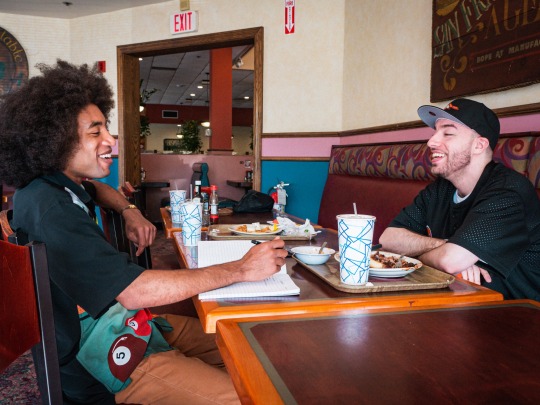

During our first stop in Norwalk, Max invited Quentin-Lavon (photographer/videographer) and myself to American Steakhouse; a landmark within the city. American Steakhouse holds a special place in Max’s heart because the restaurant provided rich childhood memories with family.
Max ordered his usual meal of barbecue ribs and began to discuss his plan about moving to Los Angeles, California to achieve his lifelong goal of becoming an actor. At the beginning of the conversation, Max stated “he’s going through the struggle for the long run, because it’s a testament.” Once I heard this phrase from Max, I could deeply resonate with his feeling of wanting to evolve, but working through the challenges our young people face in society. Divulging into this discussion, Max truly believes his calling for becoming an actor is his ticket to reaching a new found level of success.
Destined to accomplish this goal, Max strives everyday to put effort into his craft. Broadcast journalism provided a platform for Max in 2017, when joining St. John’s University WSJU Radio. From this point, Max demonstrated his love for radio by dedicating countless hours to produce quality content.
With over 500 interviews with notable individuals like Chris Webby, Anne Heche, G Herbo, Lin Shaye, Muggsy Bouges, and Fat Joe just to name a few, Max truly showcases his versatility by reaching a diverse audience. Since the birth of “Sports and Hip Hop with DJ Mad Max” in 2018, Max has also used his platform to uplift independent artists/creatives because he firmly believes in maximizing the most out of your potential.
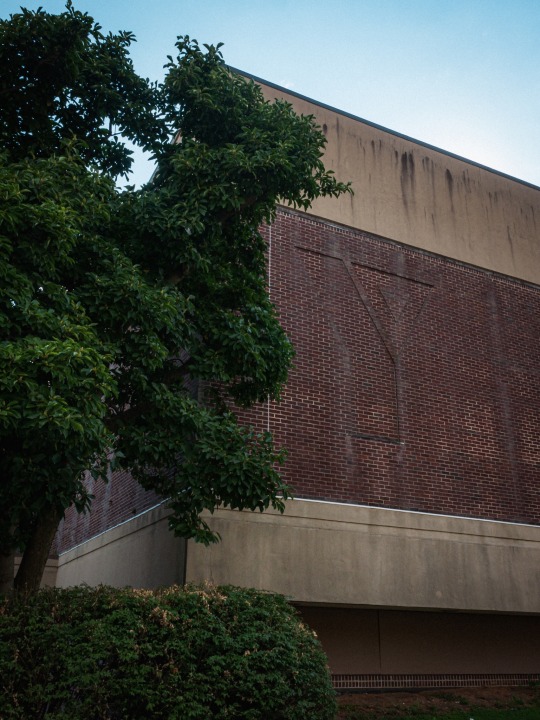

The Y
“It was fifth grade when I first started playing basketball, but I came here to get better.”
Max reminisced on his childhood days hooping at Norwalk’s YMCA; he mentioned Coach Greg as major inspiration and influence by helping Max find his game. To this day, Coach Greg still supports Max which is a true form of leadership.
Playing basketball gave Max the opportunity to connect with his peers, as he felt many students at his school didn’t understand his upbringing in South Norwalk. Sharpening his game grounded him to become a natural competitor with an undying spirit to succeed. The struggles of learning the fundamentals of basketball taught the Norwalk native the importance of having patience to improve yourself. Max compared his basketball days to finding his lane in the entertainment industry. Nevertheless, the 23 year-old has paved a way to fulfill his life’s purpose through consistency and dedication.


During Max’s eighth grade year, Norwalk’s YMCA officially closed it doors for good. Over the recent years, South Norwalk has gone through the process of gentrification leaving many of the neighborhood’s historic landmarks in uncertainty.

“Welcome to Norwalk” Part Two
2 notes
·
View notes
Text
HEATHER COX RICHARDSON
July 10, 2022 (Sunday)
With the recent Supreme Court decisions gutting federal enforcement of civil rights and business regulation and the public hearings of the House Select Committee to Investigate the January 6th Attack on the U.S. Capitol, economic news has been pushed out of the center of public conversation. That’s a shame for two reasons.
First, Democratic president Joe Biden appears to be centering his presidency around the idea of rebuilding the middle class through government investment in ordinary Americans. This is a major shift—a sea change—from the past 40 years of Republican policy saying that the economy would prosper if only the government slashed taxes and regulation, leaving more money and power in the hands of business leaders, those “makers” who would invest in new industries and provide more jobs. Watching the effect of his policies is a window into what works and what doesn’t.
Second, the Republicans are counting on anger over inflation, shortages, and gas prices to win control over the House of Representatives and the Senate in the fall elections. It’s worth paying attention to what’s really going on with those issues, as well as to what policies the Democrats and the Republicans are putting on the table to address them.
On the first point: Biden has focused on rebuilding the American middle class that has been so terribly hollowed out in the past 40 years. While he appears to be driven by his belief in the dignity of all Americans and their right to be able to make ends meet with a decent job, historians will tell you that in the U.S., race and gender tensions are significantly lower when income and wealth are more evenly distributed than when a few people at the top of the economic ladder control most of the nation’s capital. The rise of lynching in the U.S. in the late 1880s, just as trusts came to monopolize the economy, was not a coincidence.
The Republican economic promise since Reagan has been that cutting regulation and taxes would create a healthy economy in which everyone who is willing to work can thrive. But political commentator Thom Hartmann marshaled the statistics in a crystal clear Twitter thread a week ago, revealing just how badly that argument has failed.
Hartmann noted that after World War II, “the nation had hummed along for 40 years on a top income tax bracket of 91% and a corporate income tax that topped out around 50%.” Business was growing faster than at any other previous time, and businessmen stayed out of politics. The country had great public schools, research laboratories, trade schools, airports, interstate highways, and small businesses, as well as unions that protected America’s workers.
The election of Ronald Reagan meant radical tax cuts (from a top marginal rate of 74% in 1980 to the 27% it is today), business deregulation, and the gutting of social safety nets. Forty-two years later, Hartmann notes, more than $50 trillion has been transferred from the bottom 90% to the top 1%. In 1980, 60% of us were in the middle class; now fewer than half of us are. Republicans promised that permitting business concentration would lead to innovation and opportunity; instead, we have seen an end to competition, along with price gouging and profiteering from the giant companies that choke out small business.
Stock buybacks were supposed to mean that senior executives would care more about the future of their companies, but instead they have become a means for them to pocket cash.
Since the beginning of his term, Biden has tried to take on the concentration of wealth and power among a few elites. Biden’s investment in the U.S. economy through the American Rescue Plan and the bipartisan infrastructure bill has produced significant results. On Friday, the Bureau of Labor Statistics released the nonfarm job numbers for June, which show that employment continues to rise. The economy added 372,000 jobs in June, mostly in “professional and business services, leisure and hospitality, and health care.” We are still 524,000 jobs down from February 2020, before the pandemic. Unemployment remains at 3.6%, with about 5.9 million folks unemployed. There were some interesting trends in the data.
There are 880,000 more jobs in business, computer design, administration, and research than there were in February 2020. There are 260,000 more jobs in outpatient health care now than in February 2020, but hospitals have lost 57,000 workers, and nursing and residential care have lost 379,000. Leisure and hospitality—restaurants, for example—have lost a whopping 1.3 million jobs, or 7.8% of their workers, since February 2020 (although the sector is growing again). But look at this: transportation and warehousing have grown fast, with 759,000 more jobs than in February 2020. Manufacturing is back to where it was in February 2020, suggesting that President Joe Biden’s emphasis on repairing supply chains is paying off.
And in the past year, wages have gone up 5.1%. That, along with increased pressure for unionization, suggests workers have more power than they did before the pandemic. This data suggests that people are moving away from work in restaurants, leisure, and nursing—all professions hit terribly hard during the pandemic—and toward transportation and office work. The increase in wages reflects more bargaining power on the part of employees. All of this is hardly rocket science, I know, but it does suggest that the economy is reorganizing at least temporarily into new forms since the pandemic.
This is of interest as we try to figure out what’s going on with inflation, which is currently afflicting not just the U.S. but the rest of the world as well. That story tells us something about the success of the Republican program Hartmann identified. One of the reasons for inflation has been the concentration of corporate power since the 1980s. A June report by three economists for the Federal Reserve Bank of Boston noted that “[t]he US economy is at least 50 percent more concentrated today than it was in 2005,” and that such concentration amplifies the degree to which companies pass price hikes onto consumers as businesses overcompensate for rising production costs.
In the oil industry, the report notes, as prices have spiked, companies have posted jaw-dropping profits.The price of gasoline has been coming down from its crazy high for the past 25 days. In the past two weeks, the average price of gas has dropped 19 cents a gallon, and as the price of crude oil continues to fall, consumers can expect to see prices continue to fall as well, although they fall more slowly than they rise in a phenomenon researchers call “rocket and feathers.” That term refers to the fact that gas prices go up like a rocket along with the cost of crude oil but fall more slowly as the cost of crude oil comes down, in part because consumers are so happy to see any relief at the pump that they don’t shop around to drive prices lower.
One of the reasons for the crazy highs is speculation by largely unregulated energy traders that creates massive volatility in prices. Lack of regulation is in the news today in another industry, too, as journalists from media organizations including the Guardian, the International Consortium of Investigative Journalists, and the Washington Post revealed how Uber evaded regulators by using a “kill switch” that shut down regulators’ access to the files they needed to monitor the company.
There is a coming showdown between the Democrats’ approach to the economy and the old Republican approach. Biden and the Democrats are trying to pass a $52 billion U.S. Innovation and Competition Act (USICA) that would invest in U.S. science and technology to boost American industry, support research, and fund the manufacture of semiconductor chips to free the U.S. from relying on Chinese products. But Senate minority leader Mitch McConnell (R-KY) has vowed to kill the measure unless the Democrats back off on a budget package that would fund Medicare by placing a 3.8% tax on income “pass throughs” taken by individuals making more than $400,000 a year and would allow Medicare to negotiate drug prices, significantly lowering costs to consumers.
(FUCK MCCONNELL!!!!! that man is responsible for so much misery in this country!)
1 note
·
View note
Text
TOLLS Big D
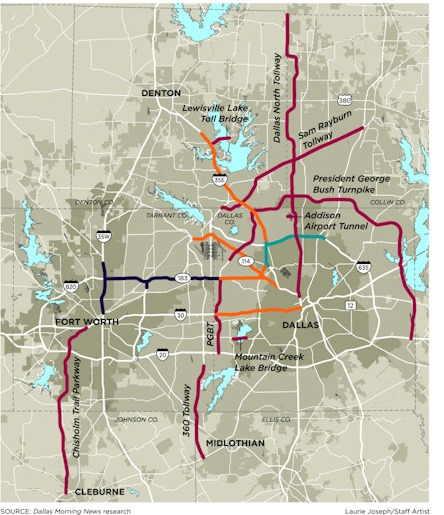
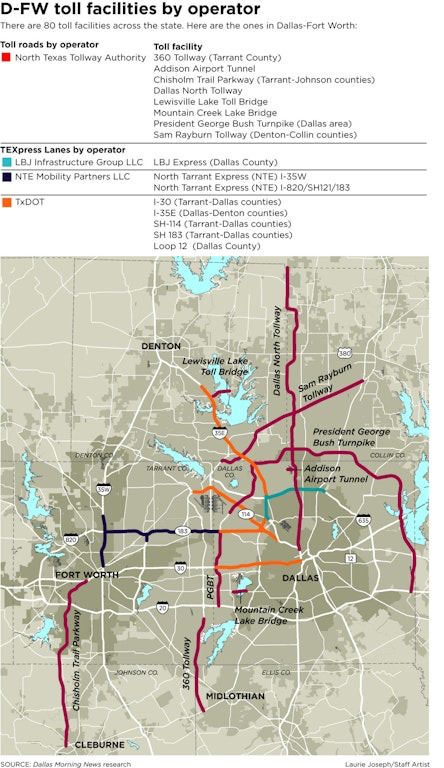
TIMELINE
From 2001 to 2021, Texas built more toll roads than nearly all other states combined.
Here are some highlights of its long history with tollways:
1953 — The Texas Legislature creates an independent entity with statewide authority to construct toll roads and bridges, the Texas Turnpike Authority.
1957 — The first toll road in the state, the Dallas/Fort Worth Turnpike, opens in North Texas on what is now known as Interstate 30. The tollway directly connects downtown Fort Worth and downtown Dallas.
1968 — The Dallas North Tollway opens in North Texas, connecting downtown Dallas to Collin County and northern Dallas to Denton County.
1977 — Tolls on the former Dallas/Fort Worth Turnpike are removed, and the road is designated Interstate 30.
1983 — Harris County Toll Road Authority opens for business after voters approve $900 million in bonds to build and maintain toll roads.
1996 — Southern California unveils the first set of “managed lanes” in the U.S. along a stretch of highway known as State Route 91. The toll lanes are built in the middle of a free road and are open to anyone who is willing to pay the fees, which can change based on the amount of congestion on the free lanes.
1997 — The North Texas Tollway Authority is created.
1998 — President George Bush Turnpike, operated and maintained by the NTTA, opens between Preston and Midway. Today, it is a 52-mile toll road that forms a sweeping arch across the eastern half of the Dallas-Fort Worth region.
2001 — Criminal penalties for failure to pay required toll or administrative fees become the law in Texas.
2003 — Texas enacts new laws that allow private entities to design, build, operate and finance toll roads and revenue-producing rail systems.
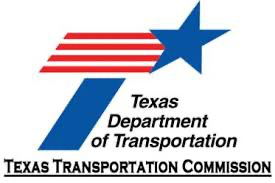
The Texas Transportation Commission is authorized to create regional mobility authorities that can build tollways and allow counties to construct and maintain toll road projects under certain conditions.
2003 — The Northeast Texas Regional Mobility Authority opens in Smith and Gregg counties and expands to more counties over the next several years.
2004 — Cameron County Regional Mobility Authority opens in South Texas. Fort Bend County Toll Road Authority opens its first toll road, the Fort Bend Parkway.
2005 — A private tollway operator unveils a proposal to develop the TTC-35 High Priority Trans-Texas Corridor, according to TxDOT. The idea, touted by then-Gov. Rick Perry, involved the construction of a 4,000-mile network of toll roads, railroad tracks, pipelines and utility lines that would stretch across the state. The estimated cost was $175 billion for a project that would take 50 years to complete.
2007 — A consortium led by Cintra begins construction of State Highway 130 in Central Texas, a 100% privately financed toll road project. This is the first comprehensive development agreement signed in Texas, known as a concession, in which a private sector company can develop, finance, construct, operate and maintain a facility for a specific period of time, up to 52 years. The developer collects tolls during the life of the agreement. The project results in a bankruptcy in 2014 and the toll road project’s financing is restructured under new ownership. Creditors blame the failure on overly optimistic financial forecasts.
2007 — State Sen. Robert Nichols, R-Jacksonville, files a pair of bills aimed at placing a two-year moratorium on road construction contracts with private companies. “We must closely evaluate private toll contracts before we sign away half a century of control of our transportation system,” he wrote at the time. Nichols recommended that the state require the developers to ensure toll rates remain reasonable and establish a formula to determine cost should the state need to terminate the contracts early.
2007 — Concerns from some members of Congress are sent to governors of all 50 states warning that rampant construction of private toll roads operated by private companies could fragment an integrated transportation system and prove a disservice to taxpayers. A key concern is that noncompete clauses make it extremely difficult if not impossible for public transportation agencies to address safety and congestion problems on highways and streets adjacent to private roads.
2007 — TxDOT’s Keep Texas Moving campaign comes under public attack after spending $9 million in state highway funds on a public relations campaign to build more toll roads. Opponents question TxDOT’s decision to partner with private companies to build toll roads.
2007 — Texans for Public Justice, an Austin-based watchdog group, finds that lobbyists spent thousands of dollars sending Texas transportation officials to events related to public-private financing of toll roads as the state prepares to launch $7 billion worth of new toll road projects. The lobbyists also paid travel expenses for 83 Texas lawmakers and transportation officials on 383 occasions between January 2005 and November 2006, according to TPJ.
2008 — The NTTA assumes responsibility for operations, maintenance and construction of State Highway 121, known as the Sam Rayburn Tollway, a 26-mile corridor through the cities of Allen, Carrollton, Fairview, Frisco, Lewisville, McKinney, Plano and The Colony.
2008 — Texas Department of Transportation officials begin to hold a series of hearings seeking public input to answer questions about the Trans-Texas Corridor project.
2008 — Reason Foundation, a libertarian think tank based in Southern California, awards then-Gov. Rick Perry a recognition for his introduction of private-sector tolls in Texas. Perry is noted as an innovator for his work in developing solutions to cope with growing infrastructure and traffic problems.
2008 — TxDOT is bombarded with criticism over Perry and its toll policies. The state Legislature places a two-year moratorium on long-term toll road agreements.
2009 — TxDOT signs a contract — executed as a comprehensive development agreement — to build the tollway known as North Tarrant Express in Fort Worth. These are segments that include Interstate 820 from Mark IV Parkway to State Highway 121/State Highway 183 and Highways 121 and 183 from I-820 and FM 157.
2009 — TxDOT enters into a $2 billion contract to construct a toll road on Interstate 635 known as LBJ Express Dallas from east of Luna Road to east of U.S. Highway 75 (near Greenville Avenue).
2011 — Regional mobility authorities are given the power to borrow money or enter into loan agreements or similar arrangements with any public or private entity.
2012 — Optional remedies for the nonpayment of tolls and administrative fees are introduced.
2013 — The Texas Transportation Commission creates the Grand Parkway Transportation Corporation, a nonprofit Texas corporation, to finance a segment of State Highway 99 known as the Grand Parkway System.
2013 — TxDOT enters into a $2 billion contract to expand the North Tarrant Express.
2016 — TxDOT enters into an $800 million contract with a private company to build toll lanes from U.S. Highway 59 to the Harris County line within the median of State Highway 288.
2019 — A new bill signed into law requires toll operators to disclose certain financial information, including revenues and expenses and capital plans over several years after construction and design costs.
2024 — The Texas Transportation Commission votes unanimously to begin the process of ending its agreement with the private company that built toll lanes in Harris County within the median of State Highway 288.
Texas Made Wrong Turn on Toll Roads
It’s time for lawmakers to reconsider costly, unfair policies
The state of Texas has abdicated its responsibility to provide necessary transportation infrastructure in exchange for a vast web of toll roads controlled by a patchwork of powerful, self-interested organizations that often act to the detriment of residents.
That’s our conclusion after reading a yearlong investigation conducted by our newsroom into how Texas built more toll roads than nearly all other states combined over the last two decades, and the alarming consequences for the public.
State leaders, seeking ways to handle an influx of residents without raising taxes, approved policies and laws far too favorable to outside toll operators, paving the way for today’s sprawling toll road network and a host of concerns, the recently published Toll Trap series reveals.
It also documents what many of us have long suspected: unfair pricing, especially during peak driving hours, and overly harsh enforcement practices that take advantage of unsuspecting motorists and that lead to economic segregation.
Some state leaders now rightly regret supporting the policies and laws that drove the toll road construction boom.

“We were sold a bill of goods,” state Rep. Ramon Romero, D-Fort Worth, told investigative reporter Yamil Berard. “We were just looking for how to find money. We now know that this was the wrong way to do it.”

If that’s not a compelling argument for reconsideration of those decisions, we don’t know what is.
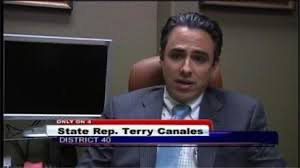
We support the efforts of state Rep. Terry Canales, D-Edinburg, chair of the House Transportation Committee, who earlier this year urged House Speaker Dade Phelan to appoint a group of lawmakers to review the state’s complex toll system and to make recommendations for reforms during the 2025 legislative session.
We call on Phelan to grant that request.
Done right, toll roads are a reasonable and smart way to fund roads.
Often privatized and built relatively quickly, they’ve allowed communities and even whole regions to handle population growth without burdening taxpayers.
North Texas in particular has benefited from these massive projects.
But our newsroom investigation highlighted several disturbing aspects of Texas’ toll road system.
For example, some lease agreements between operators and the state have allowed operators to collect tolls for 50 years, netting them excessive profits far beyond their design, construction and maintenance costs.
Toll roads also sometimes engulf whole middle- and low-income neighborhoods, making it difficult for residents who can’t afford them to make their way to free roads, which are then often highly congested, the investigation revealed.
And, particularly troubling, toll operators aren’t always required to be transparent with their financial and safety records.
With thousands of motorists driving down more than 800 miles of Texas toll projects every day, and more projects likely on the horizon, too many people are impacted by the concerns revealed in our newsroom investigation.
The Legislature must not turn a blind eye to these issues; it’s time to reconsider some of the wrong decisions that created them.
Texas tollway authorities show little mercy for Texans of color, vulnerable communities
The News’ examination found that the methods Texas uses to criminally charge vehicle owners for unpaid toll road fees may stand on shaky legal ground.
Tarrant County Justice of the Peace Precinct 5 Sergio L. De Leon shows some of the thousands of older pending toll road pleas that have been stored in a room at his Fort Worth Police Administration Building office in downtown Fort Worth, February 22, 2024.
De Leon has been deluged with toll citations -- so much so that he has asked the Tarrant County Commissioners court for an additional clerk.(Tom Fox / Staff Photographer)
On a crisp February morning, LaTasha and Morris Shepard stood in front of a Denton County justice of the peace, trying to avoid jail.
A letter delivered a few weeks before to the couple’s McKinney home didn’t mince words: If Morris Shepard didn’t show up to court, a warrant would go out for his arrest.
Millions of Texans rely on toll roads daily in a state that has built more paid thoroughfares over the past two decades than almost all U.S. states combined.
The affordability, safety and management of these roads impact us all, especially as some leaders admit more are likely coming to handle substantial growth throughout the state and in North Texas.
Morris Shepard is a disabled military veteran in his 60s who served 17 years in the Army.
LaTasha, his wife, works as a legal advocate for the National Urban League. They knew they could not miss court.
His alleged crime? A total of $272 in unpaid tolls.
Morris Shepard happens to live in Texas, where there is little mercy for those who fail to pay toll fees, even if, like in his case, it’s because of a bank account error.
Texas is one of only a handful of states that criminalize toll drivers for unpaid fees and where courts regularly issue arrest warrants over the
debts. It’s also not uncommon for governments in cities like Dallas to post so-called tollway offender names on county websites, a yearlong Dallas Morning News investigation on tolls found.
On average, Texas seizes thousands of driver’s licenses a year and blocks vehicle registration stickers for unpaid toll fees.
A total of 226,847 motorists last year received letters that their registration renewals would be blocked by just two of the state’s largest tollway authorities — the North Texas Tollway Authority in Dallas and the Central Texas Regional Mobility Authority in Austin,
The News’ reporting revealed. NTTA has also impounded a handful of cars over the last 10 years.
And unlike other states, which offer discounts to drivers who frequently use tollways or for those from low-income households, most of Texas’ more than two dozen toll operators offer few concessions or price cuts.
The vigorous collection practices continue even though some of the state’s largest public tollway operators have amassed so much money in cash reserves they could offer millions of drivers free access to toll roads and still have enough money to pay their debts to investors, The News’ investigation found.
For example, the Harris County Toll Road Authority, which manages toll roads in the Houston area, is holding $1 billion in unrestricted cash and investments as of the fiscal year that ended Feb. 28, 2022, the most recent report available to the public.
From 2019 to 2022, the authority transferred another $1.06 billion in surplus toll revenues to Harris County to pay for transportation-related items that did not include customer discounts, according to the February 2022 financial statement and an independent auditor’s report.
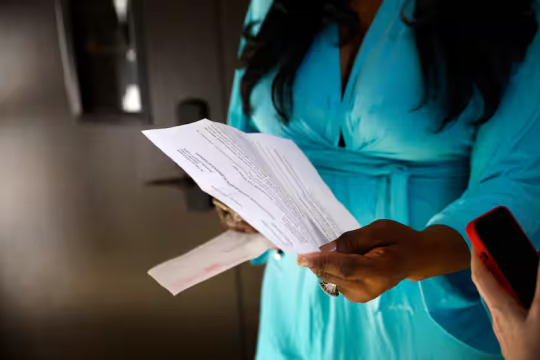
LaTasha Shepard holds the letter her husband received at their McKinney home notifying him that a warrant would be issued for his arrest over unpaid tolls.
The couple contacted the North Texas Tollway Authority to try to address the debt but were still required to appear in court.(Tom Fox / Staff Photographer)
Other toll operators say the reserves allow them to borrow at lower interest rates to build and maintain future roads.

“It’s incredibly expensive,” said Nancy St. Pierre, NTTA spokeswoman. “People underestimate how much that is.”
In addition to reviewing audits and financial documents for the state’s three largest public tollway systems for roads that were built as early as 1983, The News’ investigation included interviews with dozens of elected officials, legal analysts, county tax assessors and court clerks.
Clerks are responsible for processing tollway tickets for unpaid fines and tax assessors issue vehicle registration blocks.
The News attempted to speak with the state’s three largest tollway operators, nearly two dozen justices of the peace in Dallas, Collin, Tarrant and Denton counties that handle toll tickets and state and national transportation officials.
Journalists also attended court hearings and reviewed thousands of pages of documents officials sent after receiving Texas Public Information Act requests.
The investigation revealed North Texas — where the pace of construction of tollways over the past two decades has far exceeded other regions in the state — is the epicenter for criminal enforcement of unpaid tolls.
Among other findings:
Citations issued by the NTTA — which oversees five toll roads, two bridges and a tunnel in Collin, Dallas, Denton and Tarrant counties — eclipse all other cases handled by some justices of the peace and municipal courts in North Texas, including evictions, debt collections and small claims disputes.
To handle the backlog of cases, a Tarrant County judge told The News he has to pay his staff overtime.
Tarrant Co. Justice of the Peace points to lack of resources and staff to handle NTTA toll violators
Sergio L. De Leon and his staff have received many toll citations.
To handle the workload, he has asked Tarrant County Commissioners for an additional clerk.
Justice of the Peace Sergio De Leon showed The News a standing-room-only storage area filled with active cases of defendants who have not responded to notices and in a matter of weeks will have their driver’s licenses suspended unless they enter a plea to clear the citations.
NTTA representatives who appear in court to negotiate with defendants have been so overwhelmed by the number of citations that key evidence is sometimes left out of court files, according to a Dallas attorney who shared the public files of his ticketed clients with The News.
The News’ examination also found that the methods Texas uses to criminally charge vehicle owners may stand on shaky legal ground.
The only available evidence that triggers toll fees is a photo of a vehicle’s license plate traveling a toll road.
Prosecutors can’t legally meet the burden of proof necessary in a criminal case with just a photo of a vehicle, several legal experts said.
Under criminal law, evidence must support convicting someone without any doubt that they acted illegally.
If there isn’t proof to show who was driving, there isn’t enough evidence to convict, they said.
In 2019, the Texas Legislature voted overwhelmingly to ban red-light cameras because of similar concerns.
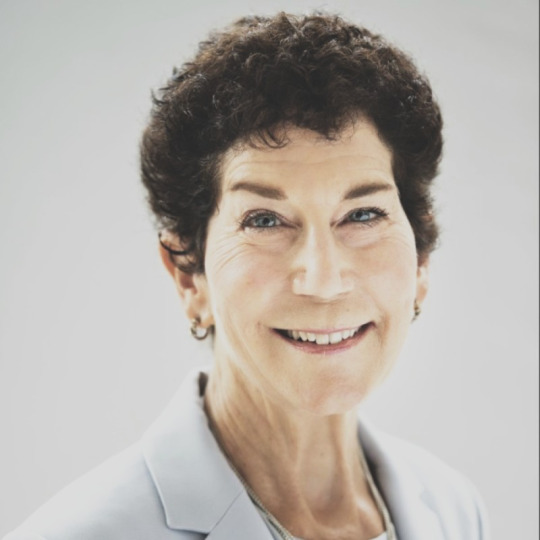
“You have to prove in a criminal case beyond a reasonable doubt that a person drove a vehicle through without paying a toll,” said Lisa Foster, a retired California superior court judge who is now co-director of the Fines and Fees Justice Center, an organization that works to ensure fines are equitably imposed and enforced. “You can’t prosecute a car, you have to prosecute people for doing things illegally.”

It’s also unclear whether some toll operators are giving drivers a chance to dispute registration blocks on their vehicles, The News found.
While state law spells out a person’s right to request a court hearing over a registration block no later than 30 days after they are notified, the NTTA said only two people have set a hearing since it began collecting tolls.
However, an attorney in Dallas who defends people for toll citations provided The News with documents supporting multiple requests he sent to NTTA that went unanswered.
Another troubling dilemma is the fact that it appears that some toll operators might not have processes in place to adequately ensure that drivers understand the fees and fine they are being charged.
The News’ investigation found some people are routinely surprised by penalties.
Sometimes, they occur because drivers don’t know their credit cards stored with the tollway authority have expired, the investigation found.
Other times, it’s because someone sold the vehicle but didn’t notify the state about the sale.
NTTA said it sends notifications to anyone who opts into their alerts.
State lawmakers passed a law last year that now requires tollway operators to notify drivers if the payment methods they link to their NTTA accounts have expired.
Still, the notification efforts haven’t helped Texans like Morris Shepard who, to date, has spent countless hours trying to resolve his issue with NTTA, which pursued him for unpaid tolls when it could not withdraw money from his bank account.
His account was frozen suddenly because of potential fraud, he said.
Shepard, like so many other drivers The News interviewed, still ended up in court.
The News also found that toll enforcement across North Texas overwhelmingly impacts people of color and those who live in low- to moderate-income communities.
The News analyzed 10 years of data, from 2013 to 2023, for roughly 160,000 tickets issued across the state for failure to pay tolls.
The analysis found nearly 40% of defendants were African American drivers like the Shepards, or Fort Worth single mother Dee Davis, who owed $17,200 in tolls and penalties, even though Black people make up only 13% of active license holders in Texas.
The analysis was based on data provided by municipal and justice of the peace courts under a voluntary reporting program of the Texas Department of Public Safety.
Who bears the burden of tolls
A Dallas Morning News analysis of 10 years' worth of unpaid toll tickets found 40% of recipients were African-American motorists.
Our analysis also found that overwhelmingly, toll enforcement across North Texas impacts people of color and those who live in low- to moderate-income communities.
Click on this map to learn how many people have been ticketed for unpaid tolls in your zip code.
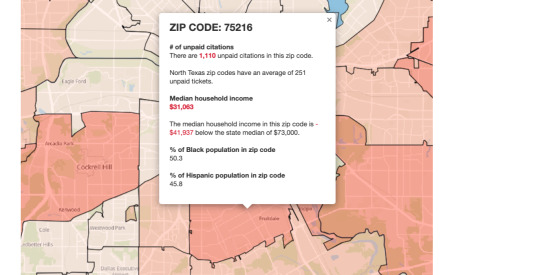
SOURCE: Texas Department of Public Safety, voluntary reporting by Justice of the Peace Courts, Census Bureau. MAP: Shuyao Xiao / The Dallas Morning News
Tollway operators acknowledged that their systems make mistakes.
NTTA, for example, processes close to 3 million transactions a day, St. Pierre said.
Most are undisputed.
But when there’s an error, NTTA corrects it, she said.
The CTRMA in Austin also “strives for fairness” and will dismiss charges if it is proven that its technology or processes were at fault, said spokeswoman Jori Lui.
Bottom line: Taking a toll road is optional, operators said.
“If you don’t like the amount you’re being charged, whether it’s on our roads or any other, don’t do it,” St. Pierre said.
How it started
The collection concerns held by so many people The News spoke to didn’t always exist.
That’s because toll fee collection used to be far simpler.
Those born before 1989 may remember throwing a few quarters in a large bin and waiting for a guard rail to rise as you made it through a toll road.
If you didn’t have the exact amount, you drove to an attended booth for change.
Back then, payment was guaranteed because drivers were forced to stop at a toll plaza to pay or toss money into a catch basket, said Mark Muriello, director of policy and government affairs at the International Bridge, Tunnel and Turnpike Association, a Washington, D.C.-based worldwide association for the owners and operators of toll facilities.

In 1989, North Texas was among the first communities in the country to contract with a company to manage an automatic cash payment system for tolls, according to news reports.
While the changes created a need for more technology, it made the process more efficient, Muriello said.
There were fewer accidents because drivers no longer had to merge into traffic after leaving toll plazas, he said.
By 2009, electronic toll tags largely ended cash-pay tolling.
That’s when drivers started mounting electronic tags they received from tollway operators to their car’s front mirrors.
The tags contained microchips that connected to prepaid toll accounts that drivers set up online.
Now, each time a driver enters a tollway, an electronic reader above the toll road scans the microchip inside the tag and a toll fee is debited from the driver’s account.
For drivers who don’t have toll tags, an image of their license plate is taken and the tollway operator uses it to scan Department of Motor Vehicles records for the car’s registered owner.
Tollway operators then send a bill to the name listed on the DMV’s website as the owner.
The big squeeze
While technology made it easier for drivers to use toll roads, it made it harder for toll operators to collect fees for people without toll tags.
So NTTA doubled down.
By 2010, NTTA began keeping records of vehicle owners who did not have toll tags and frequently used a toll without paying.
It slapped these drivers with fees and penalties, which sometimes added another 80% to their toll costs, according to articles from The News at the time.
Two years later, it created a “Top Violators” webpage that contained the names of individuals who owed money for more than 100 outstanding tolls.
In a 2012 news release, NTTA said the list was designed to provide the public with a way to easily determine if they owed a significant debt and put them on notice that they may be subject to collections lawsuits and other enforcement actions.
Over the next few years, NTTA published additional lists for what it described as “deadbeats.”
The authority sued those who wound up on this list in justice of the peace courts throughout North Texas, News articles show.
CTRMA, which oversees six toll roads in the Austin area, also refers cases to justice of the peace courts, a CTRMA spokeswoman said in an email in response to questions from The News.
By 2013, a new state law gave toll operators another tool to penalize those with unpaid toll fees: the power to impound vehicles and block vehicle registrations.
The registration blocks are allowed in about a dozen states, but lawmakers in states like Oklahoma want to stop them, according to news reports.
To help them more effectively pursue offenders, NTTA and the state’s two other public toll operators for nearly two decades also have relied on help from debt collection attorneys and hired high-profile law firms to represent them.
NTTA also does this work for others.
Private tollway operators pay NTTA to pursue drivers with unpaid toll bills in North Texas justice of the peace courts.

From 2018 to 2023, HCTRA paid $30 million in collection attorney fees in addition to $20 million to Austin law firm Linebarger Goggan Blair & Sampson to pursue other remedies such as registration blocks and driver’s license suspensions on toll evaders, according to records The News obtained from the Houston-area toll operator under the Texas Public Information Act.
From May 2022 to May 2023, NTTA sent nearly 172,000 scofflaw requests to Texas DPS for habitual violator statuses.
The designation, which applies to a driver who has accumulated 100 or more unpaid tolls within 12 months, triggers vehicle registration blocks in Dallas, Denton, Tarrant and Collin counties.
From July 2022 to July 2023, NTTA collected $153 million in toll enforcement remedies, records show.
In total, based on those figures, North Texas counties have lost more than $10.3 million in registration fees that their city leaders cannot collect because of vehicle blocks by toll operators, based on the average cost to register each vehicle, which is $60 in Texas.
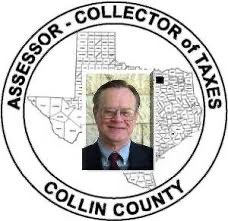
Collin County Tax Assessor Kenneth Maun told The News he refused to enforce the blocks toll operators like NTTA requested for more than a decade.
“I would find them tremendously out of date, items being billed to taxpayers who didn’t know it,” he said. “The car had already been sold one or two times. And, they (NTTA) didn’t clean anything up.”
“I wasn’t going to touch them (NTTA) because I thought they were doing a horrible job, that was for the counties, for the taxpayers, for everybody,” he said.
He finally relented around 2017, he said, when county commissioners included in the county budget three additional full-time positions to help with the workload. But years later, he said not much has changed. Billing errors for NTTA customers still exist, he said.
“I don’t respect their administrative abilities,” Maun said.
The chaos and confusion
Many of the concerns Maun described impact drivers in courts across North Texas every day, The News’ investigation revealed.
In a Frisco courtroom in February, Justice of Peace James DePiazza prepared to issue arrest warrants for people who had failed to respond to his court notices for unpaid toll fees.
He looked up at rows of empty seats. Four
of the five people sitting there that morning said they had addressed their citations with NTTA.
They wondered why they still received court notices.
DePiazza, who serves in Precinct 2 in Denton County, told The News much of his job is spent explaining to the public how the system works.
On that day, he shared from his bench that even if a driver contacts NTTA to address unpaid tolls, they must still enter a plea to address the criminal side of the infraction with the court.
DePiazza scheduled two pretrial hearings for people who pleaded not guilty with the Denton County district attorney’s office in his court that day.
One hearing was for a man who told DePiazza the NTTA had dismissed his charges in a bankruptcy he filed in 2021.
Another hearing was for a man who said he had sold his car before the citation occurred.
DePiazza told the man he needed to file a vehicle transfer notification within 30 days of the sale in order to clear the court citation.
“NTTA can come back and charge you for those tolls” if the buyer doesn’t register the vehicle or he does not file the transfer notice within 30 days of the sale, DePiazza told him.
Then, DePiazza heard his final case that day — and quickly dismissed it.
Seventy-six-year-old grandmother Andrea Peralta of Lewisville had loaned her car to her grandson, she said.
She was on a breathing machine because she caught COVID-19 in 2021 and it damaged her lungs, she said, so she needed to get back home as soon as possible.
“He took off and I guess left me holding the bag,” she said about her grandson.
DePiazza waived court fines after Peralta showed him she was on Social Security.
Peralta said she wasn’t sure how much she owed NTTA, but she sold her car for $300 more than a year ago because she couldn’t afford to fix it.
She couldn’t remember the exact date, though.
“It’s been a while,” she said.
Jeff Beltz, an attorney who defends people who have tollway tickets, waits for a hearing last summer outside the East Dallas Government Center.(Juan Figueroa / Staff Photographer)
Jeffrey Beltz, an attorney who represents people at court hearings over unpaid toll fines, said too often, NTTA representatives do not provide enough evidence to prove a driver is guilty.
The News met Beltz last summer as he waited alone one day in Justice of Peace Sara Martinez’s Dallas court.

NTTA representatives were supposed to attend the court hearing to prove his client’s toll violation, but the court postponed the hearing.
Beltz’s client was on the hook for $380.01 in unpaid tolls in addition to $525 in administrative fees from NTTA, according to a court citation record he shared with The News.
His client’s paperwork included the information that noted the total amount of unpaid tolls owed, but not a breakdown of each tollway violation his client allegedly had incurred.
There was no way his client could verify the charges, he said.
The documents also did not include snapshots from NTTA of the license plate involved in the toll violations.
“If you’re filing a criminal case, how in the world can you sit there with a straight face and say this is enough evidence?” Beltz said. “These are criminal cases and they require the highest burden of proof in the land.”
NTTA also has not responded to requests he has made for hearings to contest blocks on car registrations, Beltz said.
NTTA told The News only two drivers have ever set a hearing to contest a registration block and in each of those cases, the court affirmed the block.
What’s more, NTTA simply follows the law, St. Pierre said.
“If your car is used in the commission of a crime, it’s your car,” she said. “There is a degree of responsibility that comes with owning a vehicle whether it’s paying tolls or making the car payment or keeping it insured.”
A closer look
Between 2013 and 2023, roughly 146,000 of the 160,000 court tickets sent out for violations across the state for unpaid toll violations were concentrated in Tarrant, Dallas, Denton and Collin counties, where NTTA operates, according to data The News reviewed from DPS.
The News called and emailed the state’s three largest toll road operators, HCTRA, CTRMA and NTTA.
Only NTTA agreed to an interview.
When presented with The News’ findings about the actions it takes to punish violators, NTTA officials said it operates fairly.
If a driver is concerned about affordability, there are alternative routes that might better fit their budget, St. Pierre said.
“We’re being asked, ‘Why aren’t you being fair to them?’ when my first question is, ‘Well they used the toll roads, why would they not pay for what they got?’ ”
At the end of the day, St. Pierre said, “We just want what’s owed for using the road.”
Dee Davis, a single mother in Fort Worth, is one of thousands of North Texas motorists who face mounting bills for unpaid tolls.
Texas is one of only a handful of states that criminalizes tollway drivers for unpaid fees.(Tom Fox / Staff Photographer)
Dee Davis, the Fort Worth single mom, was hoping a phone call to NTTA to explain her situation would resolve her $17,200 toll bill.
But their answer surprised her.
She was told that the only payment plan they would accept was at least $300 a month.
Several years ago, her ex-boyfriend used to borrow her car, often driving it on toll roads to get to work.
She had never driven on toll roads.
She guesses that he must have hidden the tollway citations from her, or maybe they had been sent to an old address where they lived before their breakup.
This year, she said she’s already been stopped by police five times on her way home from work for an expired registration sticker.
NTTA blocked her from renewing her car registration because she is a habitual violator.
The status gives NTTA the authority to suspend drivers’ licenses, bar those drivers from using their tollways and impound their cars.
Many habitual violators are everyday Texans working to make ends meet, two judges said in interviews with The News.
They are hair stylists, bartenders, deployed military, single parents and grandmothers.
They are small business owners and construction workers.
Some mistakenly get on a tollway and don’t realize how quickly the fees add up, judges said.
One hundred charges can happen in a few weeks for a driver who passes several stations on a toll road to get to work and back every day.
Morris Shepard had a toll tag on his car.
For years, money was automatically withdrawn from his bank account to pay for his drives on toll roads.
But when his bank account was frozen to protect him after Amazon found potentially fraudulent activity, his bank declined his toll payments.
The Shepards said they never received notice from NTTA that toll payments could not be withdrawn.
They visited an NTTA office in Plano in February after receiving a letter from Denton County Justice of the Peace Precinct 2 that said Morris Shepard could be arrested for unpaid tolls.
They said they were surprised after they explained their situation that NTTA still told them they had to go to court.
Because he’s a disabled military veteran, Morris Shepard is eligible to drive for free on some Texas toll roads under qualifying discount programs accepted by TxDOT and Austin’s regional mobility authority.
NTTA only waives tolls for Legion of Valor members under a program that is subsidized by an anonymous third-party sponsor.
In court that February morning, the judge set Morris Shepard’s next hearing for 9 a.m. on April 11, when he and his wife said they would have in hand documented proof of the fraudulent activity on their bank account.
But the case did not end that day.
And it didn’t matter that he had documents to show that he had not intentionally tried to avoid paying tolls.
At the April 11 hearing, an assistant district attorney with Denton County told Shepard he must still pay the toll fees he owes NTTA.
Shepard also learned he would receive an email with a Zoom link for an upcoming meeting to work out a payment plan with NTTA representatives.
After that, he needed to bring to the court documented proof of his agreement with NTTA and pay $81 in court costs.
Shepard’s ticket for unpaid tolls would be removed from his record if he did not receive another citation in the next 90 days.
In the hallway after the April hearing, Shepard said he was glad his court fees and fines were reduced.
He could have been ordered to pay as much as $331 but the Precinct 2 court reduces fines to incentivize people to clear their citations.
His wife was still upset that despite their proof and talk with NTTA, they still had to go to court and pay toll penalties.
“You get the runaround,” LaTasha Shepard said. “You had to go there first, and then you’ve got to come back here. You’ve got to do all this stuff.”
“This is a redundant process,” she said.
Part 3: As Texas prepares for more growth, lawmakers may soon look for ways to lessen the burden of tolls. In North Texas, one judge slashes fines to “help people take care of their business.”
Penalties don’t have to be extreme, he says. Meanwhile, some states offer rebates and discounts to low-income families and frequent users.


IN THE KNOW
Paying your toll bills
New to tolls and don’t have a toll tag?
Paying them can be confusing, but there are ways to navigate Texas’ paid roads without getting tripped up.
CHECK YOUR MAIL:
When you drive a toll road, a paper bill arrives in the mail about 30 days later. It includes a photo of your license plate, and if you pay the bill within 30 days, you’re done.
If you don’t pay after another 30 days, you receive an overdue notice that includes the unpaid toll charges and a $10 late fee.
If you still don’t pay after another 30 days, you receive an invoice that includes a $35 late fee, in addition to the unpaid toll fees.
COURT CITATIONS:
Stiffer penalties kick in if you wait yet another month.
That’s when your account is sent to a collection agency and the Texas Department of Public Safety, which can issue a court citation for failure to pay tolls.
The court mails a letter to you, as the vehicle’s owner, about the citation and requests that you contact the court to enter a plea of guilty, not guilty or no contest.
CHOOSE A PLEA:
A guilty or no contest plea comes with additional costs — generally about $330 to the court — on top of the unpaid toll and late fees.
A not guilty plea sends your case to the district attorney’s office, where you can request a jury trial or a trial with just a judge.
If you choose to not enter a court plea, the court suspends your driver’s license.
Thousands of driver’s licenses have been suspended related to unpaid tolls over the last year, according to the Texas Department of Public Safety.
The court then sends a letter stating that if you fail to show up by a certain date, a warrant will be issued for your arrest.
HABITUAL VIOLATOR:
If you have 100 or more toll violations during a 12-month period, you are considered a “habitual violator” and the tax assessor’s office blocks you from renewing your vehicle’s registration.

Last year, more than 211,000 registration blocks were issued by two of the state’s largest tollway authorities — the North Texas Tollway Authority in Dallas and the Central Texas Regional Mobility Authority in Austin.

State law also allows tollway operators to ban you from driving on their roads.
So if you are stopped by law enforcement on a tollway, the officer can impound your vehicle.
KEEP RECORDS:
Keep in mind that the onus is on you.
These steps can still occur even if NTTA makes an administrative error or if you sell your car.
That’s because state law mandates that you file a document verifying the sale and change in ownership with the Texas Department of Motor Vehicles within 30 days.
Yamil Berard
0 notes
Text
Godrej Meridien Sector — 106 Gurugram By Investmentestate
Godrej Meridien Sector — 106 Gurugram By Investmentestate
Introduction
Investmentestate Godrej Properties brings the Godrej Group philosophy of innovation, sustainability, and excellence to the real estate industry. Each Godrej Properties development combines a 123-year legacy of excellence and trust with a commitment to cutting edge design, technology, and sustainability.
In recent years, Godrej Properties has received over 250 awards and recognitions, including the Porter Prize 2019, The Most Trusted Real Estate Brand in the 2019 Brand Trust Report, Builder of the Year at the CNBC-Awaaz Real Estate Awards 2019. The Economic Times Best Real Estate Brand 2018, and Real Estate Company of the Year at the 8th Annual Construction Week India Awards 2018.
Area and Availability:
Godrej Meridian on Dwarka Expressway Decisively situated on Dwarka Turnpike, Godrej Meridian flaunts brilliant availability to significant center points in the city. Its vicinity to fundamental conveniences, instructive organizations, and medical services offices goes with it an appealing decision for planned property holders. The straightforward entry to significant transportation supply routes guarantees that occupants can appreciate both comfort and a tranquil living climate.
Engineering Splendor:
Godrej Meridian isn’t simply a private space; it’s a work of engineering craftsmanship. The plan flawlessly mixes contemporary feel with usefulness, making a living space that is both outwardly shocking and viable. From the excellent access to the fastidiously planned insides, everything about been mindfully created to hoist the general living experience.
Investment Potential:
For those considering land as an investment, Godrej Meridian presents an alluring an open door. The improvement’s essential area, combined with the standing of the Godrej brand, makes it a promising investment choice. As the Dwarka Interstate region keeps on creating, property estimations are supposed to appreciate, enhancing the investment.
Conclusion:
In conclusion, Godrejmeridian on Dwarka Turnpike isn’t simply a private venture; it’s a direction for living. With its ideal place, compositional brightness, center around supportability, and local area driven approach, it remains as a demonstration of the developing norms of metropolitan residing. Whether you are looking for a lavish home or a sound investment, Godrej Meridian offers a convincing suggestion that catches the substance of current residing.
To know more visit here
website : https://investmentestate.in/godrej-meredian.php
Contact Us : +91–8587025600
Godrej Meridian on Dwarka Expressway
Investmentestate
Godrej Meridien
0 notes
Text
Generate a Research Question: Research for Health Professionals (Part 2)
Generate a Research Question: Research for Health Professionals (Part 2) #FOANed #nursingresearch #nursing #nurseeducator
Resource: Dine, C. J., Shea, J. A., & Kogan, J. R. (2016). Generating good research questions in health professions education. Academic Medicine, 91(12), e8-e8.
Use the FINER criteria approach to help formulate an intersting research question. Identify a problem challenge or something that wither interests or annoys you.
FeasibleInterestingNovelEthicalRelevant
Then conduct a quick literature…

View On WordPress
0 notes
Text
Get Best Transport Services in Srinagar at Gopiban Logistics for Reliable Shipment
Effective transportation services are essential to guaranteeing the smooth flow of people and products in the beautiful city of Srinagar, which is tucked away among the stunning scenery of the Kashmir Valley. Among the many shipping companies operating in the area, Gopiban Logistics is renowned for its dependability and dedication to quality. With a wide range of transport services catered to fulfill the various needs of its clientele, Gopiban Logistics has established itself as the best transport services provider in Srinagar. Gopiban Logistics has built a solid name for itself for its effectiveness, professionalism, and customer-focused approach, providing everything from local transportation within cities to interstate and even inter-state logistics solutions in all over India.
Gopiban Logistics’ persistent dedication to providing high-quality service delivery is a crucial differentiator from its rivals. In order to surpass clients' expectations, the Gopiban Logistics team goes above and beyond to ensure prompt pickups and deliveries, preserve the integrity of products in transit, and give them real-time tracking information. Gopiban Logistics not only has a fleet of well-maintained cars with the newest safety features and technology, but it also prides itself on providing exceptional customer service. Perishable items, hazardous materials, and enormous freight can all be handled by the company using a variety of vehicles, including trucks, trailers, vans, and specialist equipment.

Moreover, Gopiban Logistics takes great satisfaction in its staff of professional experts in various domains. The integrity, dependability, and customer satisfaction of the organization are characteristics that every member of the Gopiban team—from experienced drivers and logistics coordinators to customer care agents—is dedicated to maintaining. Gopiban Logistics offers the experience and resources to suit your needs, whether you are a small business seeking the best transportation solutions or a multinational organization in need of end-to-end Srinagar transportation services. Gopiban Logistics is positioned to maintain its leadership position in the transportation and logistics sector in Srinagar and beyond thanks to its demonstrated track record of success and dedication to ongoing improvement.
Gopiban Logistics is the name to trust if you're looking for the best transport services in Srinagar, to sum up. Gopiban Logistics is revolutionizing the transportation services market by redefining reliability and efficiency with its state-of-the-art infrastructure, professional drivers, and unwavering dedication to quality. The best transporters in Srinagar from Delhi NCR may be found by contacting us at +91-7291842721 or by email at [email protected]. Please check out our website at https://www.gopiban.com/Srinagar-transport-service.
0 notes
Text
Air Ambulance Services in Jorhat – Air Ambulancee
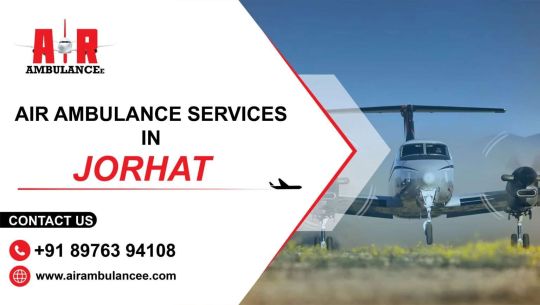
A premier option for dependable air ambulance services in Jorhat, Air Ambulancee offers a highly skilled medical staff committed to supporting patients during emergency evacuations. In a busy city like Jorhat, where getting to hospitals on time might be difficult because of traffic, our air ambulance services make sure patients get to the hospitals they want to see as soon as possible.
We recognize the need and significance of prompt medical transfers, particularly when patients must travel to places like Delhi, Mumbai, or Chennai in order to receive expert care. Even though Jorhat has medical facilities, there are times when patients need to be transferred to other cities in order to receive better medical care. Patient transfers are handled seamlessly by Air Ambulancee, who makes sure patients go from one place.
Our streamlined process eliminates any exhausting procedures for our clients. By simply contacting us, you can access rapid and efficient Air ambulance services in Jorhat. Whether you need to transfer a patient to a major hospital in Delhi, Mumbai, or any other city across India, our 24/7 availability ensures prompt and reliable assistance.
Jorhat's contemporary healthcare system includes both public and private institutions in abundance. Nonetheless, interstate transfers are still frequently required to provide the best possible patient care. This gap is filled by Air Ambulancee, which provides affordable air ambulance services without sacrificing standards of quality or safety.
When it comes to reliable and easily accessible air ambulance services in Jorhat, Air Ambulancee is a standout option. Our dedication to offering incredibly efficient medical transports guarantees comfort in dire circumstances. To arrange for effective and reasonably priced air ambulance services in Jorhat, get in touch with our committed Air Ambulancee Team at any time.
Cheap Air Ambulance Services Available In Jorhat
Air Ambulancee is the best choice if you're looking for high-tech yet reasonably priced air ambulance services in Jorhat. Modern ICU settings, comfortable transportation from accident scenes to hospitals, prompt medical attention from highly qualified physicians, and specialized advanced medical equipment for the duration of the trip are just a few of our amenities.
Our main objective is to allay patients' worries by offering quick and effective air ambulance services in Jorhat. Air Ambulancee's years of experience have allowed it to refine its ability to handle urgent medical crises, guaranteeing safe, comfortable transfers without drawn-out processes.
Whether you require emergency or non-emergency medical transportation, our committed medical staff is on call 24/7 to ensure a smooth transition between sites. Because Air Ambulancee offers pre-hospital care and treatment at a reasonable price, it is the go-to option for high-tech air ambulance services in Jorhat. Reach out to us right now for excellent support.
Intensive Care Transport Using Life Support Systems
We at Jorhat take great pride in providing the best and most efficient air ambulance services available for people who are seriously injured. To provide complete treatment during transportation, our air ambulances are fully furnished with a variety of emergency and non-emergency medical equipment. Our highly qualified and skilled doctors offer on-the-spot medical care and attention throughout the journey.
Contact Us
Contact Air Ambulancee for immediate assistance; your safety, our priority – available anytime, anywhere. Call us Now:+91 8104786573 / +91 8976394108
Email Us:- [email protected]
Air ambulance services in Jorhat
0 notes
Text
Leadership Pasco Rolls Out Bus Tour 2.0
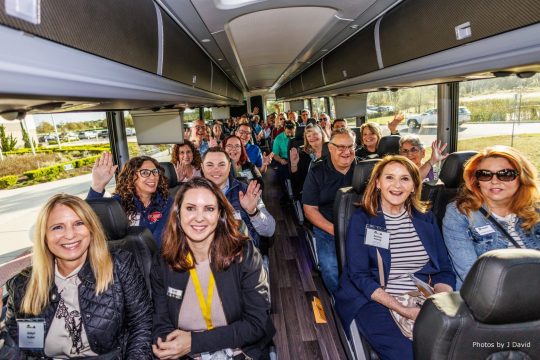
Bus Tour 2.0 made history on March 12, 2024, as the first Leadership Pasco alumni and community mobile networking and educational event. It was an idea from a board meeting executed through the leadership of board member Kathy Masucci '22 and the alumni committee.
Leadership Pasco Rolls Out Bus Tour 2.0, an Alumni and Community Experience
The day began with a light breakfast and networking at Wiregrass Ranch Sports Campus, Wesley Chapel. From there the sold-out event group boarded a 55 passenger Olympus Limo motor coach (with new bus smell) with destinations in Central and East Pasco. During the ride attendees learned about the major Pasco business and construction developments happening from the people in the know.
Hope Kennedy, North Tampa Bay Chamber President shared so much about current and future Pasco demographics, business, and plans. She also spoke about the growth of infrastructure to match the numbers of new rooftops.
The group also heard from Michael Wolf '24, Vice President, Columnar/DoubleBranch and Phillips & Jordan and Art Phelps, Senior Vice President, Industrial and Commercial, Phillips and Jordan, Inc. as we viewed the expansive mixed-use development, DoubleBranch, formerly known as Pasco Town Center.
The project will feature 4 million square feet of industrial development, 725,000 square feet of offices, 400,000 square feet of retail, 3,500 housing units and 300 hotel beds on a 965-acre parcel at the southeast corner of Interstate 75 and State Road 52. At completion, DoubleBranch will generate over $600 million in long-term economic impact on an estimated $2 billion buildout for the surrounding area.
As companies locate, the development is anticipated to be home to 6,000 jobs including many in the logistics, life sciences, and healthcare target industry sectors.
Mike Bishop '17, Senior Vice President, Pasco Economic Development Council (PEDC) spoke about projects the PEDC is involved in around the county and answered many questions along the way about land for sale, recently sold, or in development. The tour learned more about PEDC's mission and structure. PEDC is the lead economic development organization dedicated to the overall growth and prosperity of Pasco County through the development of a sustainable and diversified economy.
Pasco EDC is a private, non-profit organization that promotes countywide economic development and continues to be a strong partnership funded by corporate and public investors focused on the economic vitality of Pasco County. Bishop also spoke about SMARTstart Small Business program and other tools for small business success.
The bus drove to the new Moffitt Innovation Campus, also known as Speros for a tasty lunch and presentation by Casey Cane, Moffitt, Speros FL, Pasco County Global Innovation Center. Speros is a 775-acre Pasco County campus to be used for the future of revolutionary cancer treatment and research. The campus will feature 16 million square feet of lab, office, manufacturing, and clinical space. Several hundred acres will remain natural and a habitat for Florida wildlife.
The tour learned the name Speros, is a derivative of the Latin verb “Sperare,” meaning “to hope” or “to look forward to." Approximately 14,000 Moffitt team members will be employed on campus at projectcompletion. Harold Sample '91, was an attendee of the tour and shared Pasco County history with us, along with sights such as Angeline Academy of Innovation, Land 'O Lakes, and the Metro Lagoon communities of Eperson in Wesley Chapel and Mirada in San Antonio.
Sample and Kurt Conover '92 retired from conducting our class Bus Tour with Class of 2024, and new leaders of Michele Baker '97 and Frances Werner-Wakins '11 will be taking on the two-day program in 2025. Both attended Bus Tour 2.0 and have been working with Sample and Conover on next-year's program day.
The tour traveled back to the Wiregrass Recreation Center where they learned more about the tourism industry that is putting Pasco on the map. Tourism Day is our newest program day, so most of our alumni have not experienced the full day. Adam Thomas '24 Director of Florida's Sports Coast, our tourism bureau, and co-chair of Tourism Day presented that component along with a tour and details on Wiregrass Recreation Center by Ronnie Outen, Operations Manager and Basketball Director.
Attendees concluded with an optional happy hour at Skybox, Wesley Chapel’s only rooftop bar, at Residence Inn. It was a beautiful day, and a great way to travel around the county to learn from the best and have some great conversations with new and old friends.
Many of the attendees are members of the community who plan to learn more about Leadership Pasco or who have plans to apply for Class of 2025.
About Leadership Pasco
Leadership Pasco, established 1988, is a highly respected leadership development program designed to connect, educate, and engage emerging and existing leaders in Pasco County. The program focuses on fostering a deeper understanding of the community, promoting collaboration, and inspiring participants to take an active role in shaping the future of the county.Website: https://leadershippasco.com
Read the full article
0 notes
Text
Dubai Fixed Departure 2024
Details
Itinerary
Book Now
Details
Details of the trip4 Nights / 5 DaysDurationBangaloreDeparture Location06.30 amDeparture Time
Contact Us
9480785515 / 9148290515
Duration : 4 nights/ 5 daysDestinations Covered : DubaiPrice Packages: INR 89,999 PPInclusions : -4 Nights' Accommodation In 4 Star HotelsFlight (Ex. Banglore)Visa ChargesReturn Airport Transfer From Dubai AirportDhow Cruise With Buffet DinnerDubai Half Day City Tour + Dubai Mall Visit For Burj Khalifa At The Top 124th Floor*Desert Safari With BBQ Dinner, Belly Dance, Dubai Frame And Miracle GardenAbu Dhabi City Tour + Grand Mosque VisitFerrari World*All MealsTravel Kit
Itinerary
Tour ItineraryDAY 1 :Arrival transfer from Dubai airport to hotel.Breakfast at local Indian restaurantVisit Dubai Frame with entranceLunch at local Indian restaurantCheck in at the hotel. (Early Check in Subject to availability)Dhow cruise with DinnerDAY 2 : Half day Dubai city Tour with English speaking local guide.Dubai MallLunch at local Indian restaurantVisit Burj khalifa 124th floor non-prime hoursWitness Musical Fountain ShowDinner at local Indian restaurantDAY 3 :Abu Dhabi City tour with English speaking local guidePhoto stop at Ferrari parkLunch at local Indian restaurantVisit Ferrari park general entrance @ $ 95 Per Adult and childDinner at local Indian restaurantDAY 4 : Visit View the Palm with entranceLunch at local Indian restaurantDesert Safari with BBQ Dinner (06 Pax sharing a vehicle)DAY 5 : Check out from the hotel (Check Out at 12:00 Hrs.)Visit to Miracle garden with entranceShopping transfersDeparture transfer from shopping venue airport toboard your flight back to your respective hub.
Book Now
Online Enquiry & Payment Confirmation
Your Name*
Mobile Number*
Your Email*
Number of People*
Your Message*
Contact Number: +91-9480785515 or +91-9148290515
Pls Submit and click Proceed For Payment Button to proceed Online TransferFurther To help Contact on mobile @9845370515
Terms & conditions
PACKAGE EXCLUSIONS :Train/Air fares.Any meals other than specified above.Entry fee at Park, Monuments, Museum Etc.Any Porterage charges at Airport & Hotels tips, Laundry, Telephone Charges & meals & drinks not specified in the inclusions.Any travel insurance policy charges.Any hike in FUEL charges /Interstate Taxes charges shall affect the present TOUR COST.All extras then above on direct payment basis.Any items not mentioned in the COST INCLUDES column.MODE OF PAYMENT :50% As Advance.Balance 50% 05 days Prior to Guest Check In.CANCELLATION POLICY :Cancellation Received on or before 30 days, a 10% processing fee of the total package cost will be charged.Cancellation before 10 days including the 10th Day – 50% of Refund.Cancellation less than 10 days of arrival OR no show – No Refund.
Note
Note: Slight adjustments in itinerary may be made owing to local conditions and availability of attraction tickets. Final itinerary will be provided 7-says prior to travel
0 notes